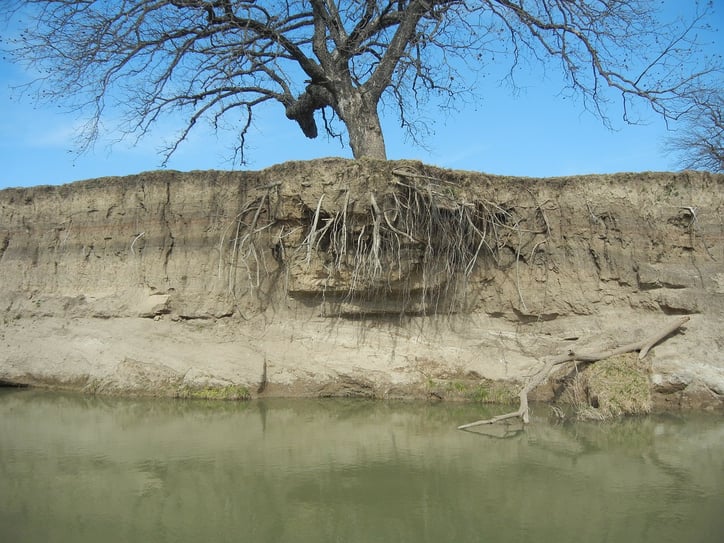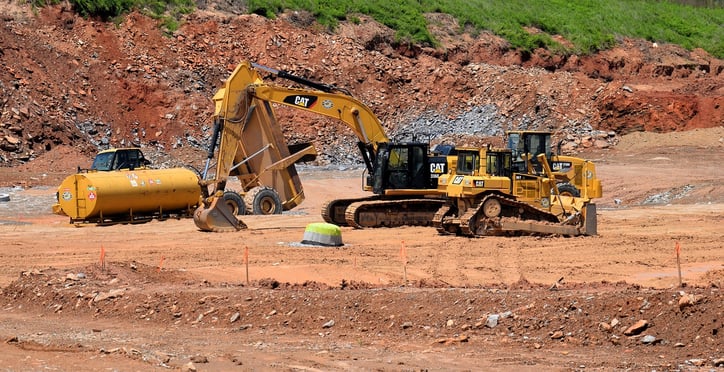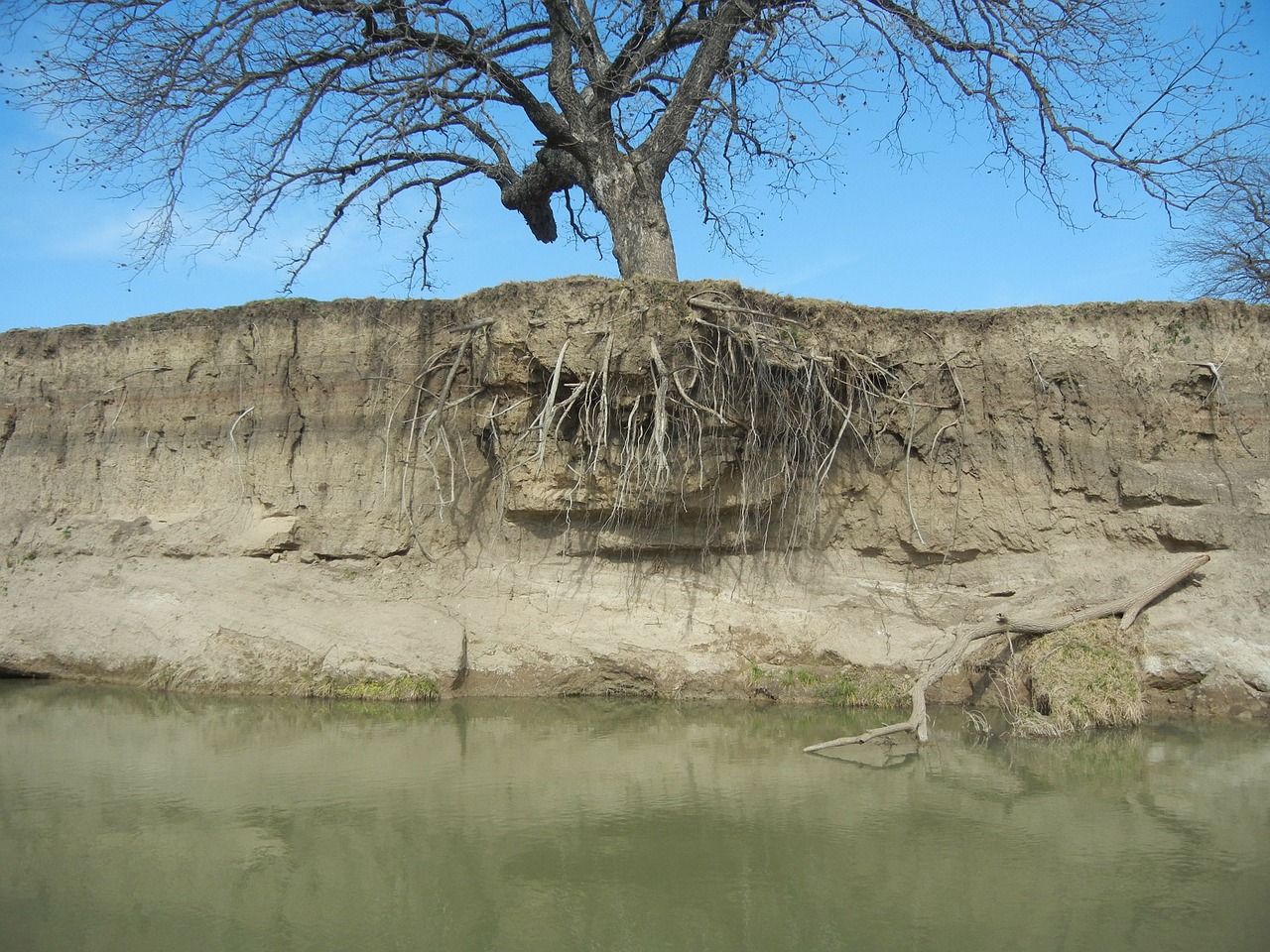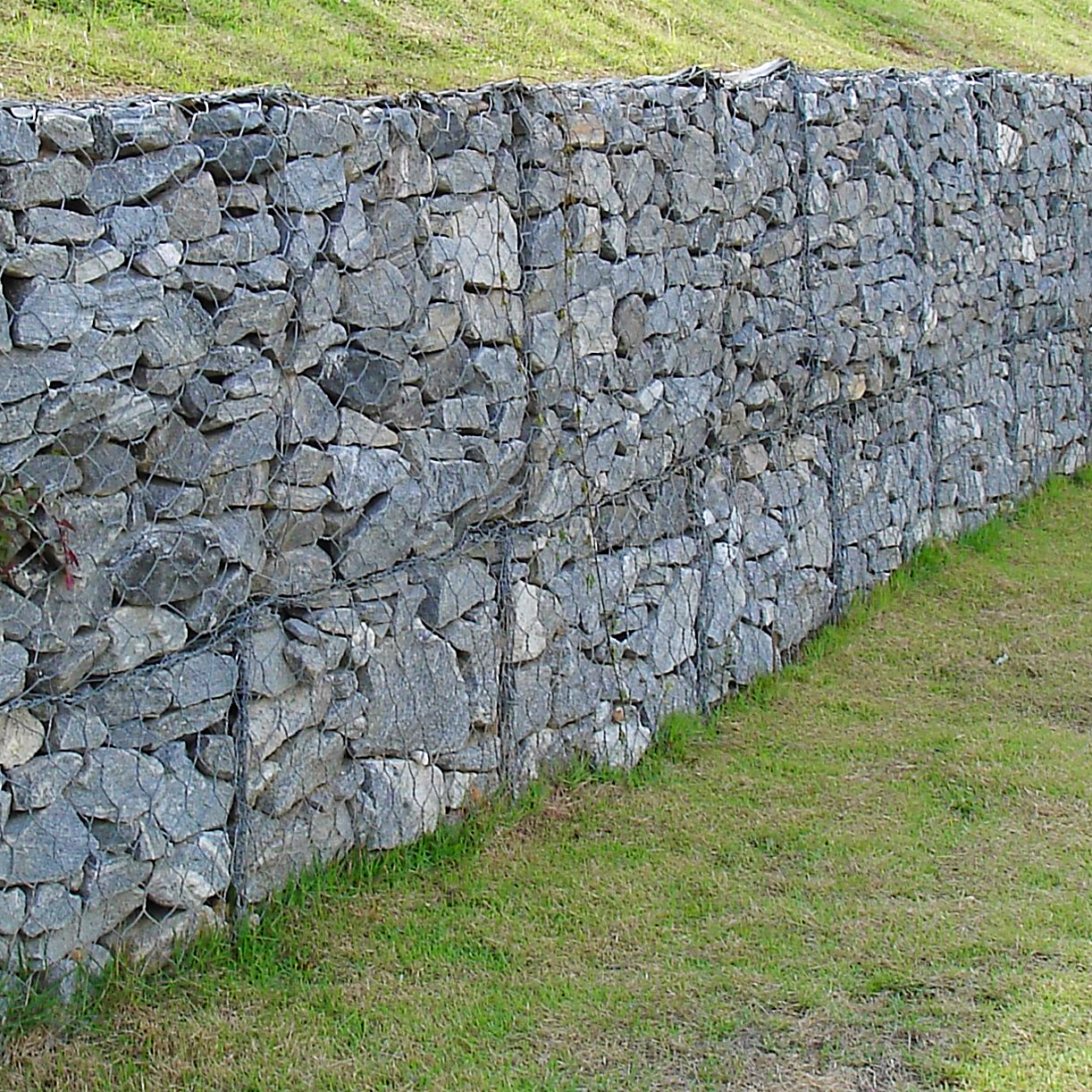Erosion control is a major concern on construction sites for a wide variety of reasons: safety, aesthetics, cost control, and environmental concerns. There are many ways to address and prevent erosion problems, many of which I addressed in detail here. But today I’d like to delve a little deeper into the concept.
Most erosion control measures focus on what I like to call the back side. That is, they are things we do to hold the particles of soil in place as much as possible and limit damage from wind or water once we’ve already laid the soil bare. Devices such as silt fence, wattles, straw bales and erosion mats are excellent in this regard, but they represent, in essence, a short-term, band-aid approach that does not take into account the health of the soil and the landscape as a whole.

Natural Inspiration for Erosion Control
The way nature approaches erosion, however, is more preemptive. In nature, soil is held together with plant roots and held in place by a layer of dead leaves, twigs, vegetative cover and other material. This layer not only restrains the soil physically, but enriches the soil as it decays. It also creates an absorptive blanket over the land that soaks up excess water like a sponge, so it can slowly filter down through the earth rather than running over the surface and taking soil particles with it. This filter effect is extremely effective at preserving the quality and health both of the soil and of adjacent bodies of water.
There are many things we can do on a construction site to mimic nature’s approach, such as:
- Stage Site Clearing. On large construction sites, it may be possible to preserve some natural buffers. Islands or borders of undisturbed soil along with its natural vegetation can help greatly in absorbing water and preventing erosion and runoff from the site.
- Compost for erosion control. One nature-emulating erosion control method that is being promoted by the University of Georgia Cooperative Extension is the use of compost, either on its own or in conjunction with other erosion control methods and devices. Compost can be blown onto gentle slopes as a blanket, or shaped into filter berms to slow and filter runoff from steeper slopes. Compost application has been shown to be a highly effective method of erosion control, often delivering superior results in terms of water quality and soil loss compared to alternatives such as silt fences and hydroseeding. Another advantage of compost is that it can be left on site to enrich and improve the soil.
- Chipping trees. On sites where a significant number of trees need to be removed, they can be chipped and put back on the soil similar to a compost blanket. After work is done, they can be tilled in to improve the soil. (Keep in mind, though, that green wood waste and/or raw compost will temporarily deplete the soil of nitrogen, since it utilizes this nutrient in the decomposition process. Therefore it’s important in these instances to incorporate nitrogen into the soil as well.)
- Polymeric soil binders or flocculants. These are substances that are applied to bare soil to temporarily cause fine particles to bind together, thus reducing incidence of erosion.
- Seed fixatives. Similar to soil binders, these products help to hold seed in place and resist being displaced by wind and water until it has a chance to germinate and root into the soil.
- Wetting agents. By increasing water penetration into the soil, these substances help to divert water down through the soil instead of forming rivulets that carry soil particles away. In this way, they can help bare soil act more like natural compost.
While none of these methods will necessarily replace good old fashioned straw blankets, filter blankets, and silt fence on a site, using them can help us to optimize those measure and make them what they should be – the last, but not the only line of defense against erosion.

Thinking Ahead for Optimal Results
Like so many other things in life, erosion control is best approached proactively. I like to compare it to going to the beach: if you strip down and hang out in the sun all day you’re going to get burned. If instead you put on sunscreen and a floppy hat and put up a beach umbrella, you’ll have avoided the need for critical care, and can look forward a very pleasant few hours at the beach with minimal pain. The same is true for your construction site. By taking a cue from Mother Nature and putting some of these preemptive measures in place first, you can keep the damage to a minimum and set the stage for a healthy landscape for years to come.
Planning a construction project? To learn more about how we can help you minimize soil loss, stay compliant with environmental and stormwater management regulations, and protect the quality of your site’s future landscape, call our office at 478-750-7733, or contact us here online and we will get back to you just as soon as we can.
1 Oct 2024



